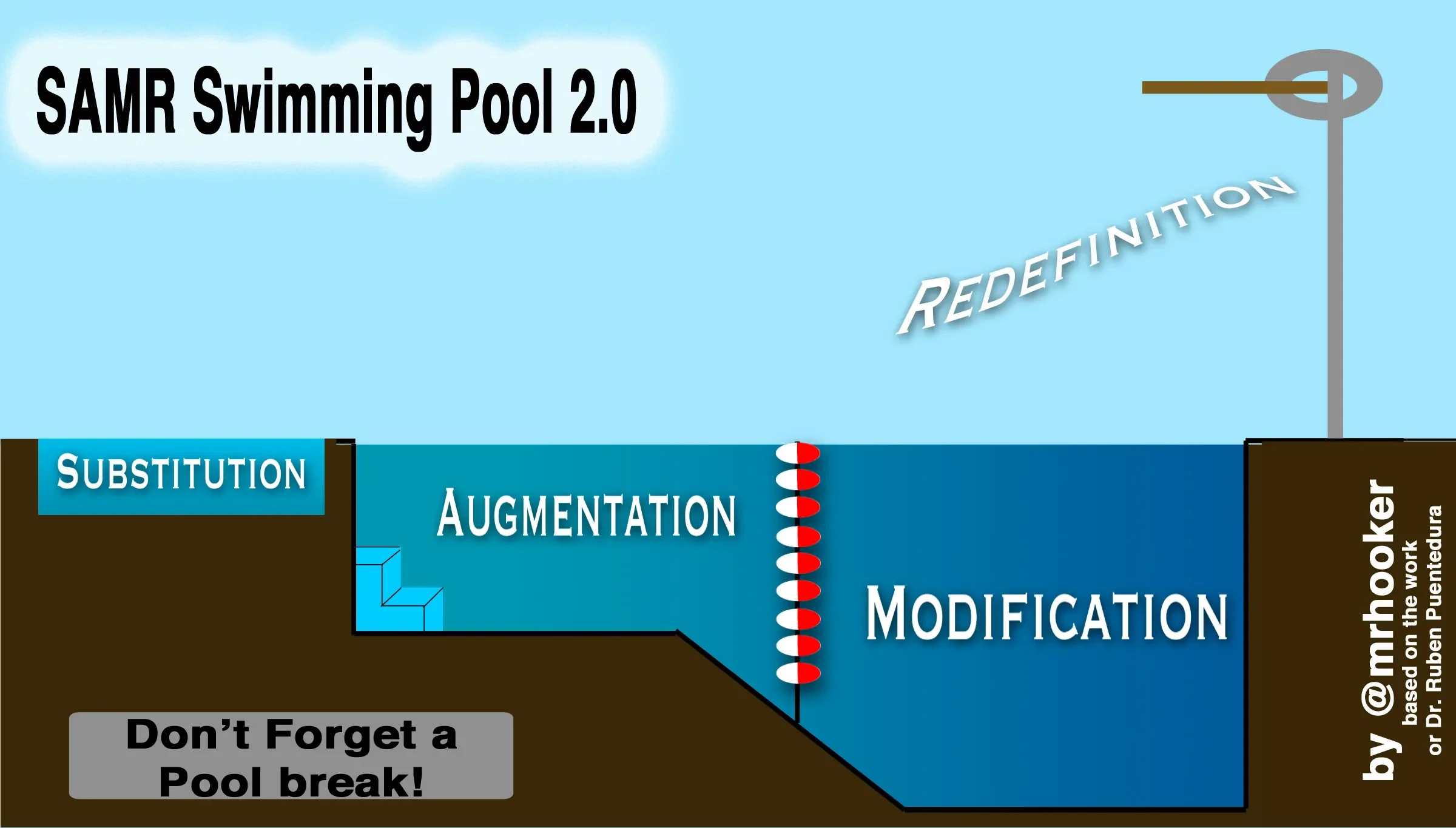Articles / Blog
All Our Articles In One Place
A Five-Step Progression to AI Fluency (For Adults and for Students)
If you’re a school leader trying to help your teachers, staff, and students meaningfully integrate AI into learning, there is no one and done professional learning experience that will get you there.
But, I think you already knew that. I believe AI fluency is a progression.
Just like reading fluency or mathematical fluency, it builds over time through repeated, authentic use…not through one professional development session labeled “AI 101.”
The good news?
We’re beginning to understand the staged journey people follow as they move from AI novices to confident, discerning (this is my favorite word around AI right n
Let’s focus on AI-Fluency, not AI-Literacy.
K-12 right now is full of new “AI words.”
AI-Literacy. AI-Readiness. AI skills. AI competencies.
Here’s my issue, and an argument for you as a school leader:
AI-literacy is an overloaded, still-fuzzy buzzword that risks distracting us from the real literacy crisis (reading, writing, critical comprehension).
AI-fluency is a better target. Students and educators who can actually work with AI in authentic tasks, grounded in strong foundational literacy.
Let’s unpack the difference, and why your professional learning and strategic plan should use “AI-fluency,” not “AI-literacy,” as the north star.
After Redefinition Comes Removal: Why AI Is Forcing Schools to Rethink the Work That No Longer Matters
I’ve spent most of my career talking about how technology can help transform learning and, more importantly, how it can transform learners. I’ve also spent the last two decades watching schools adopt new tools in hopes that something finally shifts. Sometimes it does. Most of the time it doesn’t.
But every once in a while, we hit an inflection point.
I remember one of those moments vividly. As a new teacher, I was part of the Classrooms for the Future Grant. Overnight, my classroom went from overhead projectors, chalk dust, and paperback novels (which we still love btw) to a Smartboard and a rolling laptop cart. It felt like I had walked into the future. Everything I did previously as a teacher suddenly seemed obsolete. I redesigned lessons. I changed my workflow. My students interacted with content differently.
And during that first year, I was introduced to the SAMR Model.
Our K-12 System Has A Motivation Problem. Here’s How To Fix It.
If it feels harder to get students to lean in, you’re not imagining things. Teachers everywhere describe the same pattern: “I can get compliance for a few minutes, but I can’t get traction.” National data echo that story. Recent Gallup polling found a sizable share of Gen Z K–12 students report school as disengaging. This is especially true for students not planning on a four-year college. You’ll also see that interest spikes when teachers make learning feel interesting and relevant.
But “make it more interesting” isn’t really a strategy. It’s easy to say that, but much harder to implement something at a system level.
The root issue is motivation. This is what moves a student from “I’ll do it if you make me” to “I want to do this and keep getting better.”
10 Timeless Ways to Capture Attention and Engage Learners
Every teacher and school leader I know has faced this reality: students don’t come to class automatically engaged. You are competing with phones, notifications, distractions, and sometimes even a student’s own belief that school is “just something to get through” and a game they don’t want to play.
Believe me, I’ve been there both as a teacher and a student.
The good news? Engagement isn’t magic. It isn’t about gimmicks or the latest app. It’s about timeless principles and practices that have worked for generations of great teachers, coaches, and leaders. In my new book, The 27 Principles of Engagement, I pull together stories from history and practical classroom moves to show how we can capture attention and keep it.
Here are 10 timeless ways to engage learners, and why they still work right now.
If Your Portrait of a Graduate Is Just a Poster… We Need to Talk
Too many Portraits of a Graduate become the educational equivalent of that treadmill in my basement.
I bought it with good intentions. I admired it for weeks. Now it quietly judges me under a pile of laundry.
We don’t need a poster.
We don’t need another slogan.
We need a pathway.
And the secret to bringing your graduate portrait to life — to make it more than marketing language — is simple:
Connect it to your vertical curriculum so it actually drives learning instead of decorating walls.
Let’s dig in.
Human Skills We’ll Need to Thrive in an AI World
We live in a moment of rapid change. Artificial intelligence is no longer the stuff of lab experiments or sci-fi, it’s becoming a tool students (and teachers) use every day, in assignments, research, creativity, and even assessment. As this shift accelerates, one thing has become clear: our greatest advantage is not competing with machines, but doubling down on the human skills needed in an AI driven world.
If your goal is to lead your school toward a future of resilience, relevance, and humanity, then investing in human skills is not optional. In this post, I’ll explore the most critical human skills students, teachers, and school leaders should focus on now, how they complement AI, and practical strategies to embed them into school culture, curriculum, and professional learning.
Four AI Tools (You May Not Have Heard About) That Are Helping Teachers Engage
I covered many of these tools in a free webinar: How To Actually Engage Learners with AI Tools.
At the end of every workshop or talk I give attendees a list of AI resources/tools that I’ve found useful, and that are also being used by teachers and school leaders with upsides beyond “saving time” (which is a nice part of it).
Here are Four MORE AI Tools (You May Not Have Heard About) That Are Helping Teachers Engage right now.
The One Engagement Strategy Every Teacher Can Use Right Now
The most engaging learning happens at the edge of comfort. If a task is too easy, students coast in boredom. If it’s too hard, they withdraw in frustration. The sweet spot is where friction sharpens focus. It’s where effort is required, but success still feels possible.
Psychologists call this the “zone of proximal development.” Athletes call it “the edge.” Game designers call it “flow.” Whatever the name, the principle is universal. A challenge can create engagement when it demands just enough effort without crushing your spirit.
You can see this any time you play a video game, or watch students play a game. If a game is too easy, the players become bored and lose interest because there is no sense of growth or achievement. If it's too hard, the repeated failures become frustrating and feel insurmountable, causing players to quit. The 80–85% window is the "sweet spot" that avoids both extremes.
The AI Promise Of Revolutionizing Education: A Primer
In 1995, science fiction writer Neal Stephenson published The Diamond Age: Or, A Young Lady’s Illustrated Primer.
At the center of the book was something that educators and technologists still obsess over nearly 30 years later: The Primer.
The Primer wasn’t a Kindle. It wasn’t an iPad. It wasn’t even Duolingo with a cuter mascot. It was a living, breathing, adaptive tutor that could tell stories, shift based on a learner’s needs, and guide a child not just in academics, but in life.
Today, the idea feels less like science fiction and more like a roadmap for every edtech startup pitch deck. So let’s talk about why that might be very good, or very bad, for learners.
I Got It All Wrong About Engaging Learners
For years, I thought engagement meant I had to be the entertainer-in-chief of my classroom.
If my students weren’t on the edge of their seats, with wide eyes, and smiling…well, then clearly I was doing something wrong. Right?
So I did what many of us do when we’re young, eager, and maybe just a little desperate. I would put on a show.
I tried so many things. I once taught a lesson in a cape, and no, it wasn’t even a superhero unit. I created elaborate PowerPoints with enough animations to trigger vertigo.
And let’s not even talk about the time I attempted to rap the Preamble to the Constitution. My students are probably still in therapy.
Here’s the thing: all of that got me attention… but not necessarily engagement. They laughed, they clapped, they even told other teachers about it. But did they actually learn? Ehh, not so much. At least not in the way I’d hoped.
Our Students’ Attention Is Not Gone. It’s Redirected.
Step into any classroom, in any century, and you will find the same invisible battle unfolding: the battle for attention.
The ancient philosopher Socrates, standing in the busy Athenian marketplace, had to cut through the chaos of merchants and politicians to capture the minds of young learners who were eager, while also distracted by the noise of the city. Medieval monks teaching in cold stone cloisters had to fight the monotony of endless recitations and the fatigue of apprentices who rose before dawn. In the early industrial age, teachers stood before rows of children trained to sit in silence, but whose imaginations longed to escape the rigidity of the factory-style classroom.
Every teacher in every age has asked the same unspoken question: How do I make them care?











